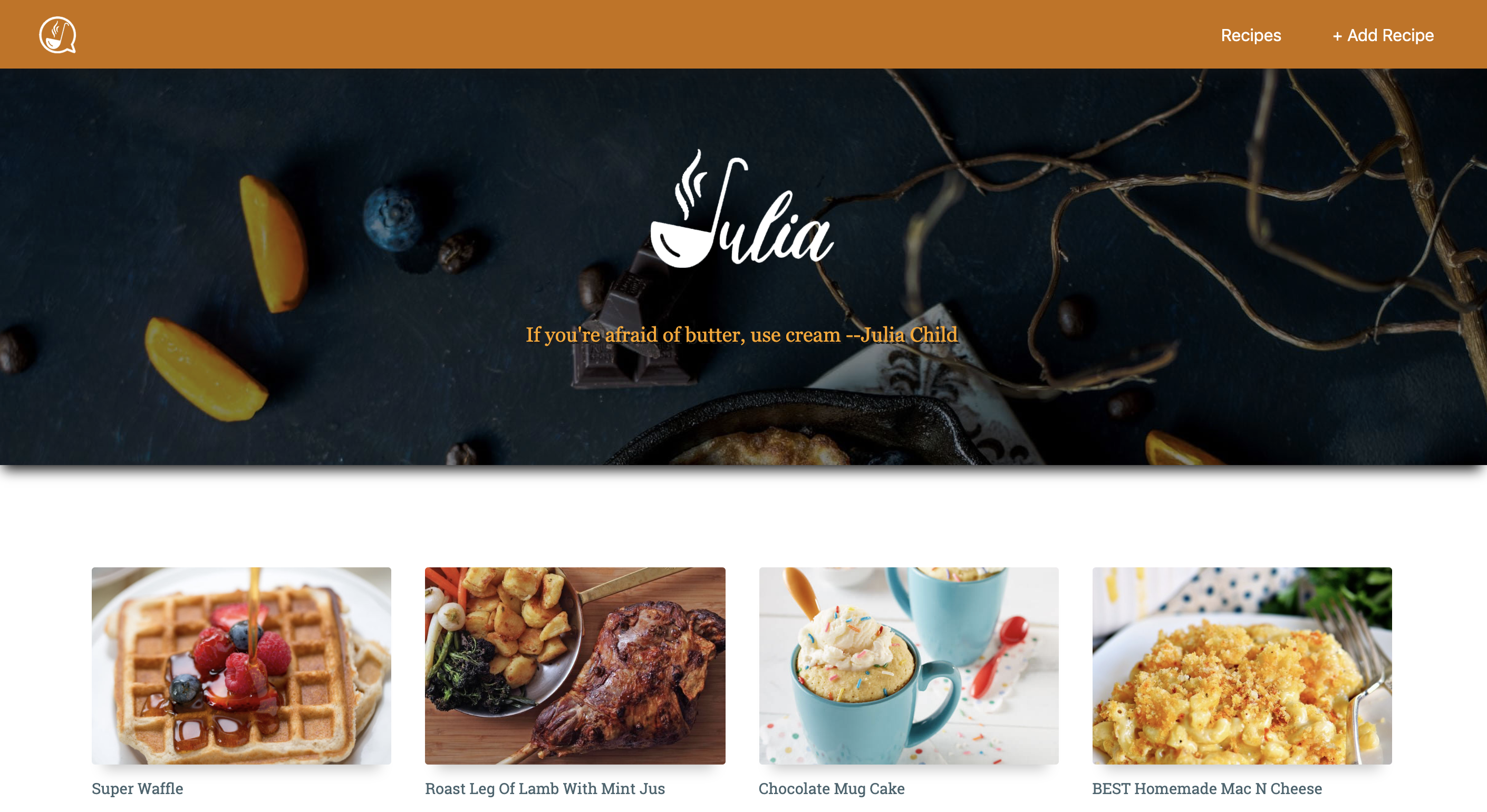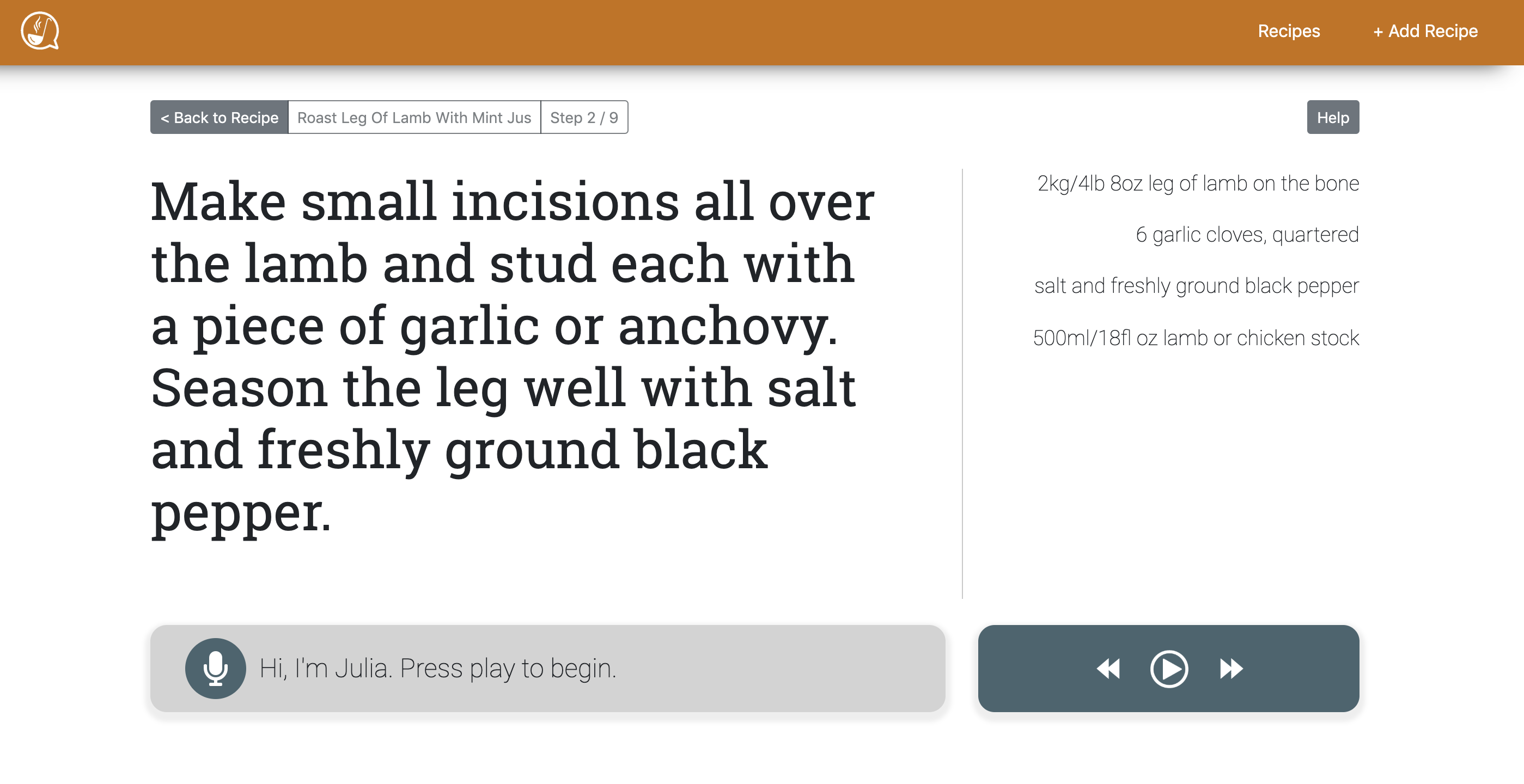Julia
A hands-free recipe helper


Overview
Are you struggling to cook and to navigate through your recipe? Tired of washing your hands to check how much flour you need or what's the next step? This speaks to all of us, this is why we decided to create a hands free recipe assistant.
The ideal cooking experience is a hands-free recipe that could guide us through the entire cooking process only using our voice. We imagined a recipe assistant that would be able to read the recipe and to let us know the exact ingredient we need for each step.
This was the capstone project for Grace Hopper, and was completed in a team of 4 over 10 days.
Functionality
The application has a database of recipes. Once you select a recipe, the application has several voice commands to guide you through cooking.
- Start: starts the recipe
- Ingredients: reads the relevant ingredients for the step
- Instructions: reads the instructions for the selected step
- Repeat: repeats the instructions
- Next: moves to the next step Previous: goes back to the previous
- step Back to recipe: returns to the recipe overview Stop: stops the
- voice assistant
Our recipe assistant also allows user to choose a recipe from one of their favorite websites and add it to Julia.
Frontend
The frontend is built with React, Redux and several APIs.
The layout is built with React Bootstrap.
In order to achieve our goal we needed to implement a technology able to understand voice commands and one able to read the text. We chose the Web Speech API because it is already embedded into Google Chrome. Rather than using the APIs directly we used two libraries.
The Web Speech API is divided into two parts:
- Speech recognition: this part handles voice recognition so it allows the users to use their voice in order to know the ingredients needed and / or how to proceed. We chose Annyang, a small library offering us the possibility to add a trigger word; in our case 'Hey Julia'. The trigger word facilitates the recognition of the command. We added some regular expressions in order to handle fuzzy matches. We noticed that often the API understood 'Juliette' or 'Julian' instead of Julia. We also had to cover the case of someone speaking and then giving a command without a pause. The choice of Annyang was good for our specific project because it was fairly easy to use. Though we would have benefitted from a more detailed documentation.
- Speech synthesis: handles text to speech. We chose ResponsiveVoice because this library handles abbreviations automatically. In a recipe instead of reading '12 oz' it will read '12 ounces'.
Backend
The backend is built using Express, Node and Postgres.
Web Scraping
Our recipe assistant allows users to choose a recipe from one of their favorite websites and add it to Julia. Web scraping was very challenging. Within our timeframe (10 days) and with our team (4 people) this was definitely a bold decision. Our version of web scraping is not perfect, it works really well for some websites with a certain structure. If the web scraping doesn't work or isn't perfect the user can edit the recipe manually.
What would I do differently ?
This project was a great learning experience. Our research for the API and the libraries used was not deep enough. ResponsiveVoice was a really great choice but Annyang might not have been the best library for us. I realized the importance of choosing the right tool for a project. In the future I will spend more time researching a library, making sure the documentation is abundant and there is a big community using the product.